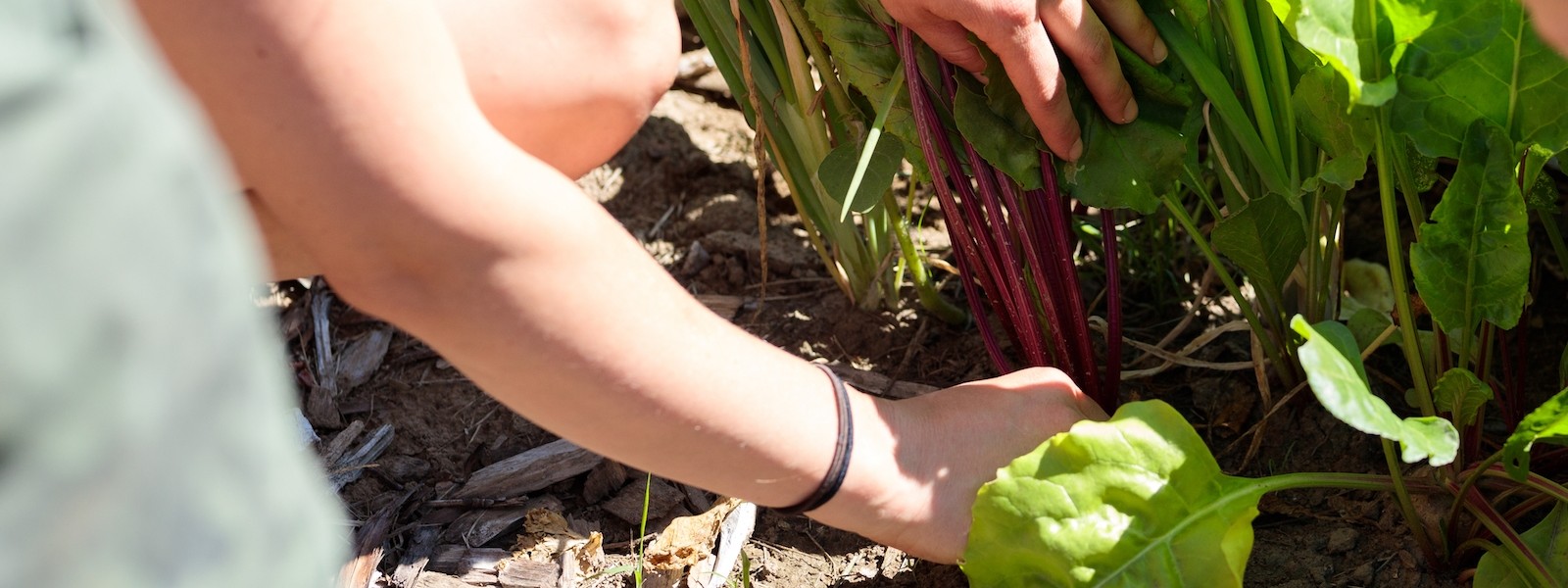Benefits of Cover Cropping
Cover crops, often planted in between main cash crops cycles, are grown for their benefits to the soil: nutrient cycling, weed suppression, limiting soil erosion, alleviating compaction, and carbon cycling.
Seed mixtures are chosen to specifically address the most limiting factor of a particular field, such as: weed pressure, nutrient deficiency, organic matter content, and/or soil compaction.
NUTRIENT CYCLING
Cover crops can provide nutrients, such as nitrogen, to help future crops thrive. These can be nutrients fixed by plants or excess nutrients captured from the soil, also referred to nutrient cycling and nutrient mining. This can reduce the need for fertilizer additions.
- Yellow clover, when incorporated into the soil as it flowers, boosts available nitrogen in the soil, allowing us to reduce fertilizer inputs in our late season vegetables.
- Cereal crops, such as rye, help to mine excess phosphorus from the deeper layers of the soil. This can make phosphorus more readily available to plants and can help reduce high soil phosphorus levels, with careful management.
WEED SUPPRESSION
Cover crops can suppress weed seed germination, provide a mulch layer when terminated, and outcompete weeds in the field.
- High biomass cover crops like Sudan grass, when seeded in late summer or early fall, can provide a smother crop, or mulch layer, into which cash crops can be planted. This gives crops a head start before weeds germinate.
LIMITING SOIL EROSION
Bare soil is vulnerable to erosion, resulting in the loss of topsoil and biodiversity. Cover crops protect soil from erosion to preserve these precious resources.
- Winter rye is a common fall cover crop, seeded after a cash crop is harvested, then incorporated the following late spring or early summer. It keeps the soil covered through the winter; its root systems reduce compaction from rain and snowfall and hold the soil in place during runoff events, when no cash crops are in the ground protecting it.
ALLEVIATING COMPACTION
Cover crop selections can be used to alleviate soil compaction, from the superficial topsoil to the deeper layers of the soil profile. Shallow-rooted and deeper-rooted cover crops work to open up poor spaces and roots channels in the soil—not only breaking up compaction, but also allowing transport links for water and nutrients to move within the layers of the soil.
- Forage radishes, such as daikon radish, grow large, deep roots that can break up compaction layers in the soil naturally. The deep roots, when they die back, create large channels in the soil that water, nutrients and soil organisms can move through.
- Grasses like winter rye can develop wide and deep, fibrous root systems when left to grow taller. When plant growth is “terminated,” a network of root channels remain in the soil, helping increase the ability of water to percolate into the soil. Living root systems create structure in the soil, helping to alleviate surface compaction from walking, driving, and precipitation.
CARBON CYCLING
Living plants are constantly photosynthesizing, feeding their root systems and soil microorganisms. The carbon pulled from the atmosphere for this process gets cycled within the soil.
- High biomass, summer cover crops can produce a lot of residue that can then be incorporated into the soil, increasing soil organic matter and carbon cycling between cash crops.
- Using cover crops like buckwheat during the growing season, between cash crops, when the soil would otherwise be bare, can help feed the soil microbiology. Soil that has living roots growing in it, compared to bare soil, encourages constant photosynthesis, feeding the soil and increasing carbon cycling through feeding microbes.
Source: Cedar Circle Staff
Additional Resources
Managing Cover Crops Profitably: Benefits of Cover Crops (SARE)
Cover Crops and Green Manures (UVM Extension)

